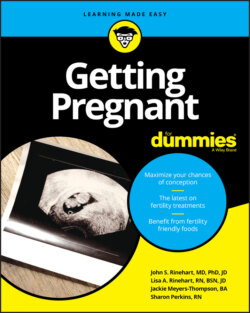Читать книгу Getting Pregnant For Dummies - Sharon Perkins - Страница 97
STIs May Cause PID: More Than Just a “Pain in the Derriere”
ОглавлениеEven though many of the infections discussed earlier in this chapter can be taken care of with appropriate antibiotic treatment, in some cases, there may be lingering effects.
Severe abdominal pain with a fever should be immediately evaluated.
Pelvic inflammatory disease (PID) is an infection of the upper female reproductive system, which includes the uterus, tubes, and ovaries. PID is most commonly associated with sexually transmitted diseases and as such, starts in the vagina and moves up into the upper reproductive organs. PID classically shows itself as severe pain in the entire lower abdomen and can include a fever (a body temperature of ≥101 degrees Fahrenheit taken twice, six hours apart), a general feeling of being sick, and nausea. PID is most commonly caused by gonorrhoeae or Chlamydia trachomatis.
It has been estimated that about 10 percent of women with these infections develop PID, and PID from gonorrhoeae seems to be more severe. Frequently, other bacteria contribute to the infection. The CDC reports that the rate of PID has been decreasing. In 2006, about 0.8 percent of women between the ages of 15 and 29 contracted PID, but by 2013, this was down to about 0.6 percent, which is a 25 percent decrease. PID can cause damage to the fallopian tubes in the form of scarring or damage to the transport function of the tubes. PID can also cause general pelvic scarring and chronic pain. Estimates have reported that for young women with PID, about 20 percent develop chronic pain, 8 percent have an ectopic pregnancy, and about 15 percent have infertility. PID is treated with antibiotics, and early diagnosis and treatment decrease the long-term complications.
